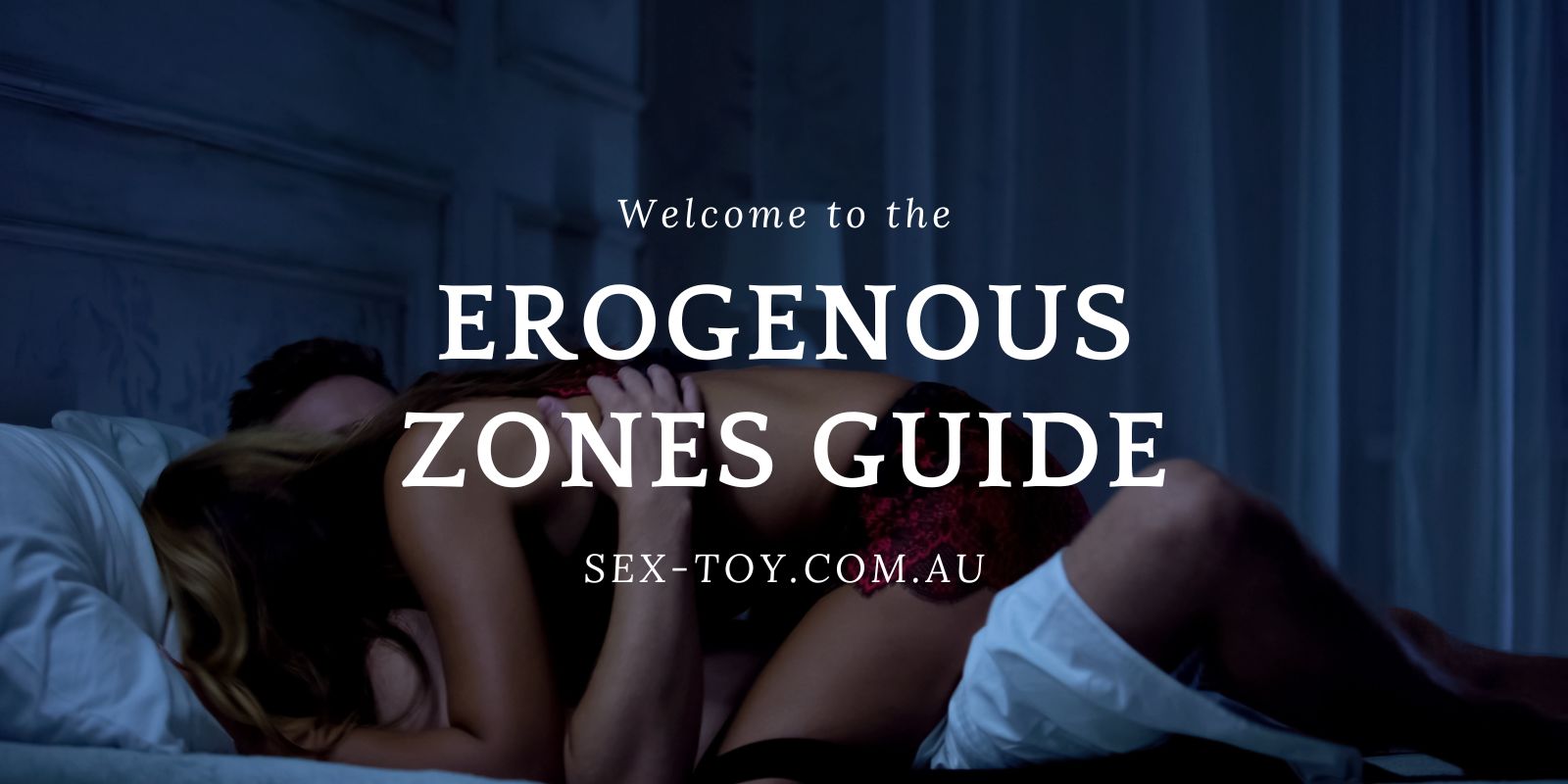Erogenous Zones Guide: Explore Sensation, Touch, and Connection
The Erogenous Zones Guide helps you understand where pleasure starts and how to respond with care. Each body holds different triggers—what excites one person may barely register for another. Awareness, patience, and curiosity are what turn touch into connection.
Through science and real experience, this guide combines physical facts with emotional insight. You’ll learn how arousal links to trust, mood, and focus—and how gentle, attentive touch can transform routine contact into genuine intimacy.
Table of Contents
- What Are Erogenous Zones and Why They Matter
- Major Zones and How to Stimulate Them with Intention
- Personal Exploration: Your Body, Your Preferences
- Partner Play and Communication: Make Touch a Dialogue
- Key Takeaways
- FAQs
What Are Erogenous Zones and Why They Matter
Erogenous zones are body areas that spark arousal when touched, kissed, or stimulated. Some are obvious—genitals, nipples, lips. Others surprise people: the scalp, knees, and even the forearms. These zones contain high concentrations of nerve endings that send strong pleasure signals to the brain. But emotion and context can amplify or mute that sensitivity.
Scientists group them into “primary” and “secondary” categories. Primary zones—like the clitoris, penis, or nipples—usually respond directly to physical touch. Secondary zones depend more on connection and environment: the neck, lower back, ears, and inner thighs can feel electric when trust and timing align. This combination of physical and emotional triggers explains why foreplay isn’t just a warm-up—it’s part of the full experience.
Psychology plays as much of a role as anatomy. Stress, distraction, or tension can numb sensation even in the most sensitive spots. When people feel safe, relaxed, and seen, touch feels warmer and deeper. To explore more about how nerve density connects with pleasure, check Healthline’s Erogenous Zones overview. Use these insights as a framework, then test your own responses. That’s the real purpose of this Erogenous Zones Guide—to learn what makes your unique body come alive.
Major Zones and How to Stimulate Them with Intention
The Erogenous Zones Guide identifies common areas of sensitivity while reminding readers that preference always wins over anatomy charts. The neck, ears, lips, chest, inner thighs, and lower back tend to respond most clearly because they’re packed with sensory nerves and soft tissue. Start with slow pressure and alternate between skin contact and breath—it keeps the nervous system alert and receptive.
One simple principle: mix rhythm and pause. The pause lets the body interpret touch instead of chasing it. Stroke the neck with fingertips, then hover before moving toward the collarbone. Trace light circles on the chest before shifting to the inner thighs. For partners with penises, try a gentle touch to the perineum or inner thighs before direct stimulation. For partners with vulvas, slow tracing near, not on, the clitoris can create stronger build-up. Subtlety builds heat faster than speed ever could.
In my work as an escort, I’ve learned that the biggest breakthroughs come from forgotten spots. One client once said she couldn’t feel much during sex, yet melted when I brushed her forearms. It reminded me that pleasure hides in overlooked places—the goal isn’t to find every zone, but to notice which ones respond that day. For anatomical references and extra context, read MasterClass’s erogenous zones guide. Combine those insights with your own curiosity and partner feedback to refine what this Erogenous Zones Guide teaches: real pleasure starts with paying attention.
Personal Exploration: Your Body, Your Preferences
Before touching anyone else, the Erogenous Zones Guide encourages learning your own map first. Solo exploration is how you build awareness of texture, pace, and reaction. Try a slow session of mindful touch—use fingertips, temperature contrast, or vibration on different body parts. The goal isn’t climax; it’s noticing. Which areas tighten, soften, or feel alive? Once you know your responses, communicating them becomes easier and more natural with partners.
Toys can help you explore safely and with variety. Start with softer surfaces or mild vibrations, then switch intensity to see how nerves adapt. If you’re new to sex toys, check Choosing Your First Vibrator for guidance on comfort levels, materials, and safety. Exploration works best when curiosity leads—listen to your body instead of chasing results. The more you understand your own signals, the better you’ll read someone else’s.
Partner Play and Communication: Make Touch a Dialogue
The Erogenous Zones Guide reminds us that good sex isn’t silent. Touch works best when it’s shared communication—watching, listening, and adjusting. Ask open questions like, “Do you like this pace?” or “Want me to keep going?” Feedback doesn’t break the mood; it builds trust. If you stay calm and responsive, arousal flows more easily, and exploration feels safe rather than performative.
For men, stamina and control make a big difference in giving and receiving pleasure. Strengthening pelvic muscles improves focus and endurance, helping you stay tuned to your partner instead of rushing. For more on this, see Sperm Loads and Stamina—a practical piece on body awareness and performance balance. Keep communication natural with these simple cues:
- Ask what kind of touch feels best—pressure, pace, or temperature.
- Use pauses to read body language and breathing patterns.
- Mirror reactions: if they breathe deeper, slow down and match rhythm.
- Check in softly during position changes or transitions.
- Keep curiosity higher than expectation—pleasure builds from attention, not agenda.

Key Takeaways – Erogenous Zones Guide
- The Erogenous Zones Guide shows that touch is more effective when it comes with attention and curiosity.
- Primary zones are obvious; secondary zones often carry unexpected pleasure—explore both.
- Solo exploration helps you understand your body and gives you language to guide a partner.
- Partner play improves when communication is constant—feedback is part of the moment, not an interruption.
- Listening to breath, movement, and cues matters more than finding “the spot.” Trust and rhythm are the real gateway.
FAQs – Erogenous Zones Guide
Q1. Are erogenous zones the same for everyone?
No. Everyone’s body is different. Use this Erogenous Zones Guide as a starting point, then pay attention to your unique responses.
Q2. Can you learn new sensitive zones over time?
Yes. Through exploration and safe experimentation, parts of the body can become more sensitive to touch—especially when trust and comfort are high.
Q3. Do toys change how I explore erogenous zones?
Yes. Toys provide new textures, temperatures, and rhythms that help map zones faster. Go gently, notice reactions, and adjust as needed.
Q4. What if I feel nothing when a “zone” is stimulated?
That’s normal. Try changing pace, pressure, or surrounding context—like music, lighting, or mind-set. If nothing changes, shift focus and try the next section of this guide.
Q5. How do I ask a partner about their sensitive zones respectfully?
Start with curiosity instead of judgement. Say: “I want to learn what you love—can you show me or guide me?” Use language that values comfort and consent. Remember: feedback builds connection, not awkwardness.
Benjamin Higgins is a male escort and writer sharing real advice on sex, relationships, and intimacy—helping men become better lovers and partners.



Leave a Reply